

Suunto Blog
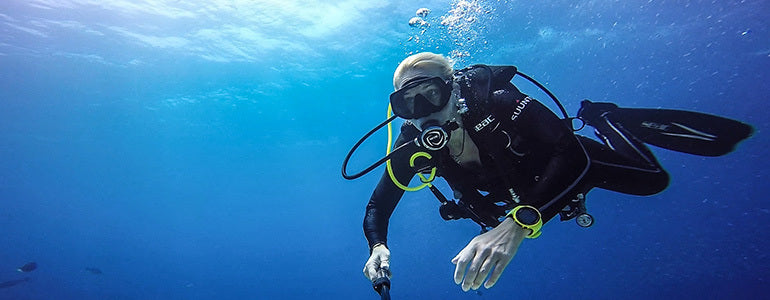
How to start diving
The famous Scuba Diving Girls Margo Sanchez and Stephanie Adamson are long-time champions of exploring the ocean. The Californians constantly share images and clips of themselves diving with playful seals, baby rays, turtles and sharks. Who better to ask how to start scuba diving?
© scubadivergirls.com
What do you say to someone thinking about diving for the first time?Just go for it. There is so much to see and experience with scuba diving. Don’t be afraid of all the gear, you will quickly get used to it and be empowered by it. There is really nothing that compares to this experience and you will not only love scuba diving, but also you will fall in love with a world unknown to you now.
“When you find a connection with the ocean and its inhabitants, it is a feeling you cannot ignore.”
What do you wish every newbie diver knew?
Have fun! Diving will bring so much joy to your life so remember to enjoy it. Make sure you find dive buddies who enjoy the experience and enhance your experience. It is important to follow your instincts and don’t let others intimidate you.
Click to see the new Suunto Zoop Novo Blue*!
© scubadivergirls.comWhat path do you recommend?Depending on your experience in the water, it may be good to try out scuba first. There is a class offered by most dive shops and independent instructors called Discover Scuba. This allows you to get in and get some instruction and try out the equipment before committing to a full certification class. But if you know you are ready, then it is time to sign up for an open water diving course.
“There’s nothing more memorizing than watching a shark glide by silently and unexpectedly or a seal who comes to pull on your fin as you frog kick your way through a kelp forest.”
What are the key steps to becoming a diver?
Finding a good instructor that you feel comfortable and safe with is the first step. Learn the skills and safety procedures during class and practice as often as possible. Even after you are certified, you should continue to practice the skills on a regular basis, as this will make you a better diver. Get as much time in the water as possible. Find buddies who are more advanced than you so that you can learn from their techniques. Don’t be lazy when it comes to your equipment care and maintenance. Your equipment is your lifeline.
© scubadivergirls.comWhat are the important things to remember? Safety should always be your first priority. It takes many dives before you are skilled enough to deal with the many issues you can experience under the surface. Understand your limits and never dive beyond these limits. If you want to do more advanced dives, take the classes to certify in that discipline first and even then be sure the diving is within your physical capabilities. When diving a new place find a local dive expert to guide you. Be sure you understand your gear. Diving should be super fun but always be sure safety is your primary focus.
*Suunto has just released the Zoop Novo Blue, a dive watch perfect for beginner divers or people seeking new adventures. Click here for more info about this simple to use dive computer.
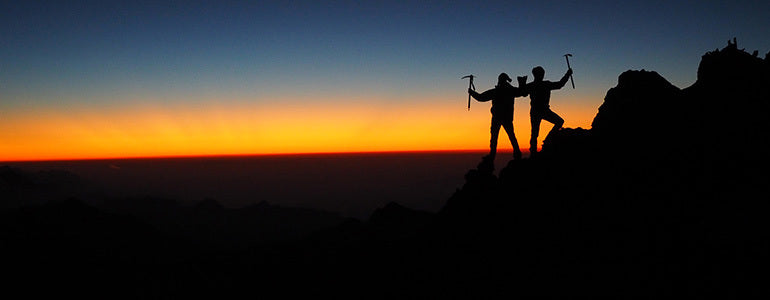
Meet the first guy scaling all the 7 summits – from sea level
High school teacher Dave Williams is attempting to become the first person to scale the highest summits of the seven continents by starting at sea level and running to each mountain.
Dave on his hike from the Black Sea to Mt Elbrus in Russia. © www.sea2summit7.comWhen Dave Williams isn’t teaching at a high school in Auckland, New Zealand, he’s doing one of two things: running or eating. “I run a half marathon in morning and a half marathon in the evening, which has made the necessary training feasible while working full time,” Dave says. “Keeping the weight on has been hard even though I eat eight meals a day.”
On the summit of Kilamanjaro. © www.sea2summit7.comDave has completed sea to summits on the highest mountains of four continents – Aconcagua, Kilimanjaro, Elbrus and Kosciuszko – and is about to set off to Alaska for a five-week expedition to make his attempt on Denali – the highest mountain in North America. Starting on April 19, he will run 350 km from Anchorage to the road end. “It will take five marathons to run to the road end, then a three day trek to the base of the glacier, then a nine day trek up the glacier to the base camp, then another two weeks to the summit,” he says. “One of the biggest challenges I've faced during preparation is to build the required fat and muscle stores while simultaneously increasing my fitness and running over 100 km per week. I predict I will lose up to 10 kg during the five weeks of adventuring.”
On the way to the summit of Aconcagua. © www.sea2summit7.comLater this year he will be heading to Antarctica to make a sea to summit attempt on Mt Vinson. He’s saving the best to last, however. In 2018 he will begin running from Kolkata, India, doing 32 marathons in 30 days, to Everest base camp and then climb the highest mountain in the world. “I enjoy climbing more than the running,” he says. “Running is more repetitive. “When I start running I know I’ve got the best to look forward to. The finale is the climb.” The 30-year-old outdoor education teacher began his Sea2Summit7 project in 2013 after two friends committed suicide due to long battles with depression. The loss got him thinking about depression and what he could do to help. “I had an epiphany while doing a sea to summit adventure in New Zealand,” Dave says. “I thought I could do same thing on the 7 Summits and raise money for the Mental Health Foundation.”
Success at last! © www.sea2summit7.comHe’s raised $5,400USD so far and, incredibly, has paid for most of the project out of his own pocket, investing $50,000NZD ($34,000USD) until now. The first mountain of the project, Aconcagua, was the most difficult. He failed twice. On the first attempt in July 2014, a storm hit on his summit attempt and climbers he had met earlier died on the mountain. On the second attempt his body gave out on the climb and he had to call it off. Finally, in January 2016, everything came together and he summited Aconcagua. “The thing that always keeps me going is receiving personal messages from people who have been following the project and who say I’ve inspired them to get off the couch,” he says. Dave hopes he has to run to Denali only the once. “Sea2Summit7 is all about never giving up and calling on friends to help when you are feeling fragile," Dave says. “This time I have an awesome expedition team of five who will be fulfilling specific roles along this journey so it is feasible and safe.”
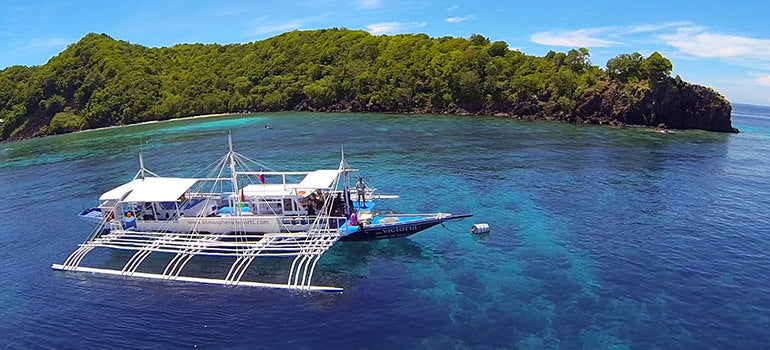
Win a diving trip to the Philippines and introduce your non-diving friend to the underwater world
As a diver you have probably seen some pretty amazing places. But have you been able to share your excitement with your non-diving friends? Explaining the experience certainly isn’t always easy. To overcome this you now have a chance to invite your friend, who is not yet familiar with diving, on a diving trip to the Philippines to explore the underwater world with you!
To get a chance to invite your friend on a diving trip post a picture of an unforgettable diving moment and tag your new-to-diving friend to the post. The winner of the contest will win a week-long trip for two to Atmosphere Resorts in the Philippines with flights included. The resort is beautifully situated on a beachfront location on the island of Negros Oriental near Dumaguete. Your friend will have a chance to participate on a four-day open water diving course at the resort.
Share a photo on Facebook or Instagram and tag it with your non-diving friend and #DiveWithMe and @suuntodive. The most inviting entry will be selected as the winner by Suunto and the Scuba Diver Girls. In addition to the main prize five Suunto Zoop Novo dive computers and PADI Open Water Touch e-learning packages will be raffled amongst all participants.
The contest period is March 17th – April 10th 2016.
See the full terms and conditions here
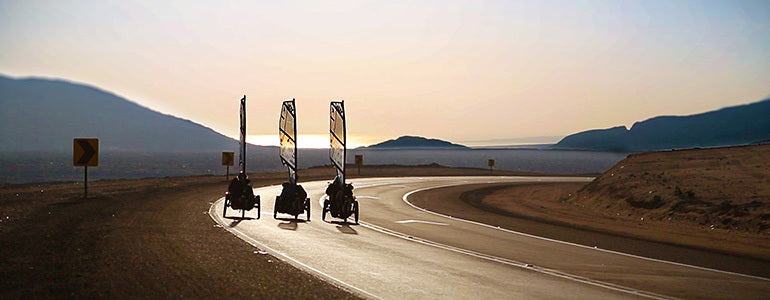
The adventure mindset
You don’t have to be an extreme rock climber or cliff diver to experience the adventure mindset – and reap its rewards. You just have to say yes more, finds Tarquin Cooper.
© www.davecornthwaite.comDave Cornthwaite was once a graphic designer in Swansea, Wales, a bad one, he freely admits. Then in 2005 he decided to try something radically different – and so he boarded a flight to Australia with a skateboard in his luggage and a crazy idea in his mind. Several pairs of shoes, approximately 2,911,500 pushes, and 5,822 km later, he successfully made it across the continent. It was the start of new beginning. “To many, this was a bizarre notion even to consider, let alone practice, but personally I had never been faced with a larger opportunity. It wasn't crazy, it couldn't have felt more sane. For the first time in my life, I felt I had purpose.” Cornthwaite has never looked back. He’s currently 11 journeys into Expedition 1,000, a mission to undertake 25 journeys of 1,000 miles (1,600 km). These have included swimming the Missouri, descending the Mississippi by SUP and crossing the Atacama desert by ‘whike’, a sail and pedal-powered recumbent tricycle.
Over 500 people came out on 20 different camps, some had never camped before.
He says he doesn’t see himself as ‘an adventurer’ or particularly brave. “I just made a decision to being open to more things. My curiosity has just grown and grown,” he says. Unsurprisingly, Cornthwaite is a massive advocate for adventure as a means of ‘facing Mondays with a smile’ as he puts it, helping to organise social projects, events, workshops and encourage others to find their adventurous spirit.
© www.davecornthwaite.com
This summer for example he decided to get to know his Facebook friends in person, inviting them to go camping with him over various weekends. The result was amazing, he says. “Over 500 people came out on 20 different camps, some had never camped before.” Such was the success, they formed their own tribe, the Yes Tribe and organized their first ‘Yestival’ in October. The idea is to encourage people to share ideas, whether adventurers or entrepreneurs and then learn how to take the steps to make things happen.” He says we have so much to gain from embracing our adventurous spirit and taking that leap into the unknown, and not just for the obvious benefits being in the outdoors brings. “As I meet more and more people I feel that curiosity. It needs to be brewed,” he says. “The human race is designed to evolve: curiosity and adventure – they’re both part of moving forward.” It’s the embodiment of the 7R gene spirit.
© www.davecornthwaite.comSomeone else who lives by the adventure maxim is executive coach Matt Walker who believes the adventure mindset is not just a tool for adventure sports but as a way of facing life, and all that entails. “My life revolves around adventure,” he says. “It is my livelihood: Adventure in the classic sense of scaling high mountains in remote regions of the world and adventure in the mindful sense of living each day, each project, and in each relationship with intention, focus, and humor.”
Adventure is the willingness to commit to an uncertain outcome with an open heart.
He says it’s hard to live out the philosophy of adventure in our day-to-day lives. “It is the hardest thing I have ever attempted,” he says. “Bringing adventure into the core being of my life has been fraught with challenge and learning. The reward though is a level of engagement and awareness that is deeply satisfying and joyous.” And what is the elusive essence of adventure? “At the core, adventure is the willingness to commit to an uncertain outcome with an open heart and a willingness to learn and engage,” he says. “It is the ability to take a leap into the unknown with mindfulness and grace. Framed this way, opportunity for adventure presents itself to us everyday.”
© www.davecornthwaite.com
He says there are five key components of adventure: ‘high endeavor', the ability to think big; ‘total commitment’, the willingness to embrace challenge; ‘an uncertain outcome’, a necessity to keep us engaged and aware; ‘tolerance for adversity’, the ability to remain resilient; ‘great companionship’ to make the journey not just possible but also worthwhile. He adds: “Adventure is not reserved for the extreme athlete or the daredevil. It is an attitude and lifestyle choice. It is an expression of your heart's intention and passion for life.”
Adventure is not reserved for the extreme athlete or the daredevil.
It’s a view echoed by by psychologist, leadership coach and adventurer Sarah Fenwick who also says adventure doesn’t have to be climbing Mt Everest. “It all depends on the personality,” she says. “Some people are happy to ski to the North Pole who’ve never skied before, while others might want to at least complete a ski journey in Norway for example before going.” It’s all about getting out of your comfort zone, but by the right margin, she says. “I like to think of fear and excitement as different ends of the same continuum. When you do a challenge which you perceive as just outside your comfort zone, where your skill set is just below or 90% of what’s required, that’s when you get that little bit of excitement. Then, when you do achieve it, you get that great feel good factor. I think everyone should experience that fear-excitement zone!”
© www.davecornthwaite.comFenwick has plenty of personal experience herself of that fear-excitement zone; in a sail boat on many expeditions around the world, including to Antarctica; in the air as a record-breaking paraglider pilot which included becoming the first person to launch from the true summit of Ben Nevis, the highest mountain in the British Isles. The secret to embracing your inner adventurous spirit, she says, ‘is making sure that when you stretch, it doesn’t become a negative experience’. “For some people it might only be 5% or 2% out of their comfort zone. But it’s a positive thing. There are so many stories of how people have grown and gone on to do bigger and better things. The more people who do that the more we’ll have an aspirational and achieving society.”
Some people just wanted to go hiking while others talk about climbing Everest and cycling across continents.
Cornthwaite is used to listening to his audience’s own goals after the motivational talks he gives. “I was at an event last night,” he says. “Some people just wanted to go hiking while others talk about climbing Everest and cycling across continents.”
© www.davecornthwaite.comHis advice for taking that first step? “Find a group or an event that echoes your passion or go along to a talk. Surround yourself with people who share that passion. Then naturally, having that support and encouragement helps you make the next step.” And one more thing he says: “Just say yes more!” Walker has a word of caution however: “Adventure is work – but the pay-off is well worth the commitment. Your summits await.”
Lead image: © www.davecornthwaite.com
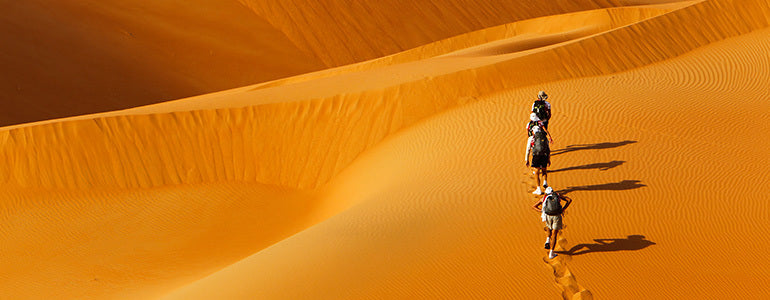
Leadership lessons from an adventure-racing champion
Nathan Fa’avae is the captain of Team Seagate, a world champion adventure racing team. He knows both sides of endurance sport – individual and team competition – but is renown for his ability as a team captain. We caught up with the New Zealander to find out what it takes to build a winning team. Adventure racing has taken Nathan around the world. © Nathan Fa'avaeWhite-water and sea kayaking, climbing, caving, orienteering, trail running, trekking, road cycling, mountain biking, ski touring – Nathan Fa’avae does it all. If the lifelong adventure junky isn’t doing one of the above, he enjoys taking his children on adventures in New Zealand’s stunning wilderness. The 43-year-old has been a semi and full time professional athlete for 16 years and competed in 12 world championships. Remarkably he has done so while battling a heart condition that he’s had surgery for three times. His role as the captain of Team Seagate, which dominated the adventure-racing scene for years, has earned Nathan wide respect as a leader. Any big races in 2016? I’m not sure what racing I’ll do in 2016 and beyond, if any. I’m always fit and active, I love the sport but I’ve done a lot of it. I’m an adventurer so that’s a lifestyle for me, not something I’ll stop doing.
Team Seagate has one multiple adventure racing world championships. © Nathan Fa'avae
Why do you enjoy about team competition?
With the team racing I like the fact we battle together, as a stronger united force. It’s nice to be on the start line with friends and know we’re in this thing together. I get strength and courage from that. How do you see team versus individual competition? As an individual you can control your pace to suit, if you want to ease up, go harder, whatever, but in a team you’re dictated by the speed of the team. The support and camaraderie of a team often makes the major challenges more enjoyable and achievable.
Nathan has paddled in 15 countries and many exposed situations. © Nathan Fa'avae
How do you manage with team dynamics? As a team captain, accommodating and nurturing people to get the best out of them is an important role. My strength in captaining teams is communication and composure. I place high value on open communication and not sweating the small stuff. I try to see everything in a positive light and always look for solutions to problems.
Cross-country mountain biking was his first competitive sport. © Nathan Fa'avae
How do you choose your teammates? Building a team is about matching people who will add value to one another’s skill sets. Team work and unity spirals up if you get that mix right, blending together like-minded people with similar attitudes. It’s important we enjoy being together, socially and competitively. For me personally, I tend to only race with people I truly consider friends, people I respect and trust. That’s how I choose my teammates.
Part of adventure racing is dealing with the unknown – how do you deal with that?
I think our team has always dealt with the unknown because we always expect it. In adventure racing, the thing you have not planned for is going to happen, so you need to be flexible and adaptable, roll with things and not get worried and stressed. My motto is ‘nothing can shock me’, that means when we get last minute surprises, they’re never actually a surprise.
© Nathan Fa'avaeDo teams make better decisions in the outdoors or individuals? There’s no hard and fast answer to this question. From my experience, I feel safer in the outdoors on my own. I know my limits and capabilities and act accordingly. The close calls I have seen were in groups when group culture meant they did something dangerous they wouldn’t have done as individuals. People do tend to show off in front of other people and subsequently take more risks.
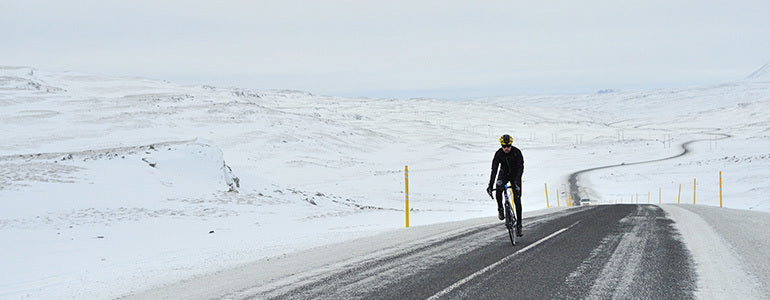
7 reasons why you should go cycling over winter
He recently cycled 1300 km in Arctic Norway over seven days – in the middle of winter! A few weeks later extreme cyclist Omar di Felice cycled 1350 km around Iceland in five days. We caught up with him when he got back and asked why cycling over winter is awesome and how to do it well.Omar has won a number of high profile extreme cycling races. © Omar di Felice
Enjoy the fresh air
Cycling during winter is a challenge and a way to explore my limits. When I climb a mountain in winter conditions with no cars and no other cyclists on the road, I can breathe pure air and enjoy the solitude. I love it – it's very introspective!Omar cycled from Rome, his hometown, to Paris non-stop in 72 hours. © Omar di Felice
Ready for race season
During the last years I learned to cycle in winter conditions in the same way I do in summer. My goal for winter is to do the same quantity of climbs and meters of ascent. If you can do this during winter you will be better prepared for the first races of the season.His adventure in Iceland was a tough and magical experience. © Omar di Felice
Get tougher
When you cycle for several weeks and months in cold weather then you can better tolerate poor weather conditions during the rest of the year. It's a way to make your body better prepared and stronger. I love this part of my training.The landscapes were incredible, changing every 10 minutes. © Omar di Felice
Take it gradually
As with all training, you've got to be progressive with winter cycling. Experiment with it gradually. Pay attention to having the right apparel to avoid health issues and, of course, the right tires. Conditions during wintertime are the most difficult with slippery and icy roads.In September he's riding 2000 km from the Pyrenees to northern Italy. © Omar di Felice
Calories are king!
Nutrition and supply are crucial: carefully consider your caloric balance, eating more fatty foods to prevent hypothermia and problems connected to a lower body temperature. To perform well in cold conditions you need the right caloric supply. A typical training week is between 400 to 700km. © Omar di Felice
Track progress
I use my Suunto Ambit 3 Peak to monitor my heart rate and caloric consumption and, especially during an Arctic ride, it's important to know the exact air temperature. I also use it to monitor the distance and ascent of each ride. I prefer my watch to a bike computer because it’s more resistant to extreme and cold conditions.
© Omar di Felice
Feel the passion!
Staying positive on long, a cold ride is important, but it’s easy when you follow your passion. Turning my passion into a profession is so special and when I'm tired I think, ‘Okay Omar, you’re doing the thing you dreamed about since you were a boy so no excuses, stay focused and enjoy the ride’.”
© Omar di Felice










































































